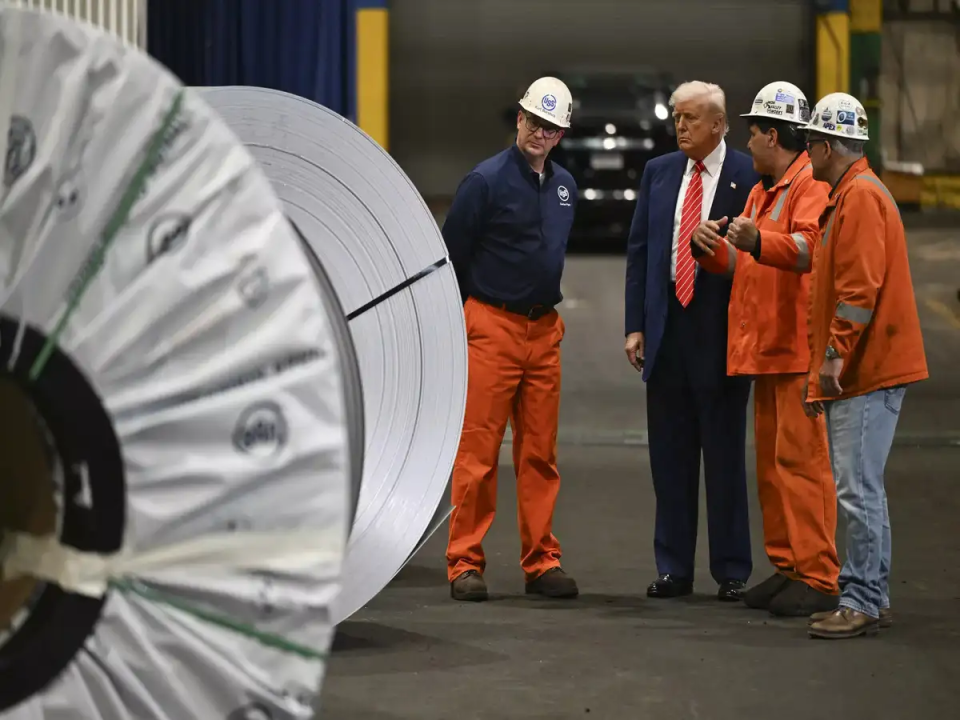The mining and steel sectors are seeing a significant boost following President Donald Trump’s announcement that tariffs on imported steel will double from 25% to 50%, proposed to start this Wednesday, June 4th. Speaking at a US Steel facility in Pennsylvania last Friday, Trump framed the move as a decisive step to protect and strengthen American steelworkers and the domestic industry. The decision has sent ripples through global markets and ignited a sharp rally in US-listed steel and mining stocks.
At the rally, Trump made clear his intentions: “We are going to be imposing a 25% increase. We’re going to bring it from 25% to 50%, the tariffs on steel into the United States of America, which will even further secure the steel industry in the United States.” He suggested that at 25% some foreign producers might find ways to circumvent the tariffs, but at 50%, “nobody’s getting over that fence.” The announcement was greeted with enthusiasm by industry workers, who see it as a lifeline for American steel manufacturing.
The market’s response was swift and pronounced. Shares of major mining and steel companies surged at the opening bell this morning. Cleveland-Cliffs (NYSE: CLF) jumped roughly 22%, reflecting investor optimism about the potential for higher domestic steel prices and reduced foreign competition. Steel Dynamics (NASDAQ: STLD), saw its stock climb more than 13%, while Nucor (NYSE: NUE) advanced over 12%. The VanEck Steel ETF (SLX), a popular vehicle for diversified exposure to the sector, rose more than 3%.
Analysts note that the rally is fueled by expectations that higher tariffs will increase demand for domestically produced steel, lifting prices and margins for US producers. This is particularly significant for Cleveland-Cliffs, which is positioned as a leading integrated steel producer in the country. Steel Dynamics and Nucor, both major players in the sector, are also expected to benefit from a more protected market environment.
The tariff hike is not without controversy. While it is designed to bolster the American steel industry, it is likely to increase costs for manufacturers and construction companies that rely on steel as a key input. In the past, similar tariffs have led to modest growth in US steel production but also resulted in higher prices for cars, tools, and machinery, ultimately shrinking output in those industries by billions of dollars according to previous International Trade Commission analyses.
Internationally, the move has been met with concern. The European steel industry, for example, is bracing for significant pressure as traditional supplier countries may lose access to the US market and redirect their steel exports to Europe. This could exacerbate existing import pressures on the European Union, where Russian steel already accounts for a notable share of imports.
American steel industry representatives have largely welcomed the announcement. The American Iron and Steel Institute and the American Steel Association have both cited the need to protect the US market from global overcapacity, particularly from China. Trump also hinted at a new partnership between US Steel and Japan’s Nippon Steel, involving a $14 billion investment in US steel manufacturing, though details remain vague.
Investors are clearly betting that the tariff increase will translate into higher profits for domestic producers. The sharp rise in Cleveland-Cliffs (CLF), Steel Dynamics (STLD), and Nucor (NUE) shares signals strong confidence in the short-term outlook for the sector. The VanEck Steel ETF (SLX), which tracks a broad basket of steel-related stocks, is also benefiting from the positive sentiment.
The immediate future for U.S. steel producers looks promising, at least in terms of pricing power and market share. However, the long-term effects are less certain. Higher tariffs could lead to retaliatory measures from other countries, further complicating global trade relations. The U.S. auto industry, which relies heavily on imported steel, may face increased costs that could dampen its competitiveness.

